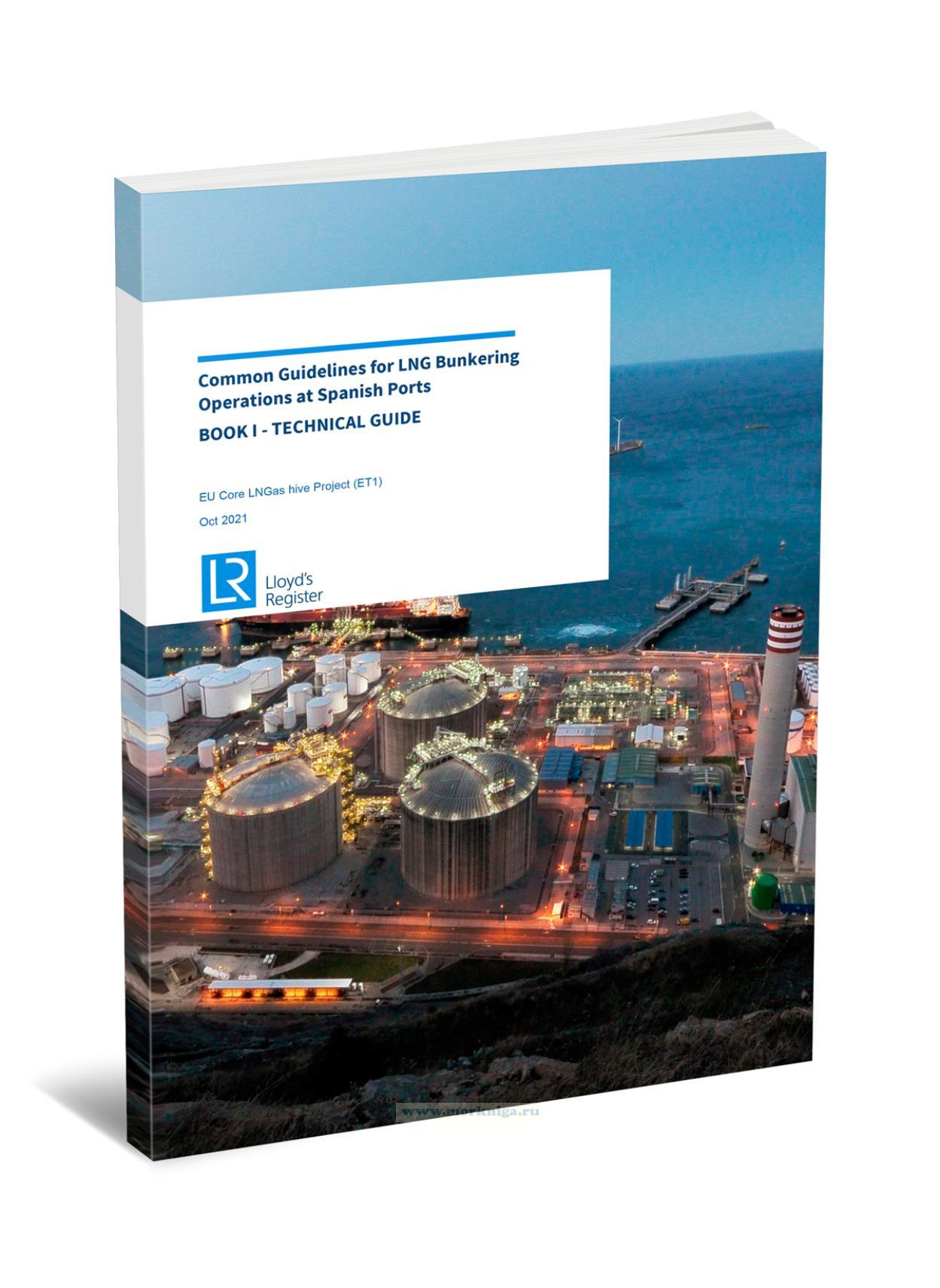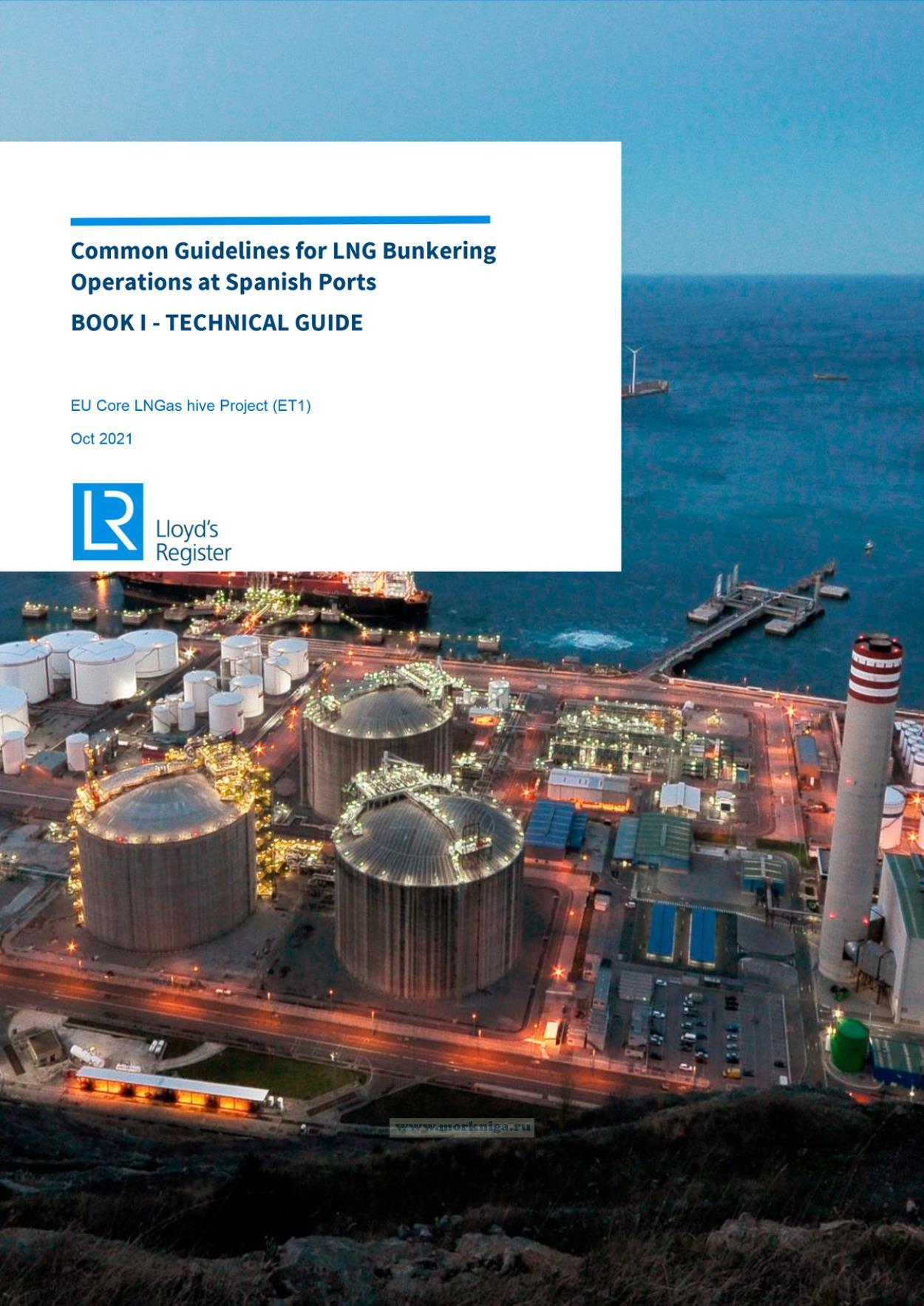Common Guidelines for LNG Bunkering. Operations at Spanish Ports. Book I - Technical guide/Общее руководство по бункеровке СПГ. Операции в испанских портах. Книга I - Техническое руководство
Книга на английском языке
The project is developing a safe and efficient, integrated logistics and supply chain for LNG in the transport industry (small scale and bunkering), particularly for maritime transport of the Iberian Peninsula. This book is intended to provide knowledge and recommendations on all aspects of the LNG bunkering activity. After a general introduction to LNG as bunkering fuel, if follows with eight thematic chapters covering subjects such as: regulation, equipment, procedures, personnel, roles and responsibilities, risks assessment, etc. Each topic is presented as a unit of knowledge and is broken down into the most relevant aspects that the PA should know about, including recommendations when there are alternatives. References to other sources of regulations, standards, or industry recommendations are also provided for the consideration of the PA.
Contents
Common Guidelines for LNG Bunkering Operations at Spanish Ports
Contents
Book I Technical guidelines
1. General knowledge of LNG bunkering
1.1. LNG as a bunkering fuel
1.2. LNG Characteristics
1.3. LNG Value Chain
2. LNG Bunkering Technology
2.1. Truck to Ship (TTS)
2.2. Ship to Ship (STS)
2.3. Pipeline To Ship (PTS)
2.4. Safety components and critical Equipment
2.5. Equipment certification
3. LNG Bunkering Procedures
3.1. Description of LNG bunkering general process
3.2. Vapour Management
3.3. EMSA Guidance on LNG Bunkering: Schematics
3.4. Operational checklists
3.5. Assessing and mitigating methane emissions
3.6. LNG measuring mechanism: Quality and Quantity
4. LNG Bunkering Regulatory Analysis and Guidelines
4.1. Main regulatory framework
4.2. Standards
4.3. International Maritime Codes and Rules applicable to Gas Carrier Ships and Gas Fuelled Ships
4.4. Industry Guidance
4.5. Spanish National specific regulation
4.6. Port local regulations
5. LNG Bunkering Risk Assessment Analysis
5.1. Introduction to risk analysis
5.2. Risk Assessment Techniques
5.3. Risk Assessment applicable to LNG bunkering operations at Ports
5.4. LNG bunkering control zones
5.5. Maritime Traffic Risk Assessment
5.6. Road Transport Risk Assessment
5.7. Simultaneous operations (SIMOPS)
6. Emergency Response
6.1. Emergency Response Planning at Ports
6.2. Port Emergency Response Manual
7. Roles and responsibilities
7.1. Personnel involved in LNG Bunkering
7.2. Key stakeholders in LNG Bunkering operations at Ports: roles and responsibilities
7.3. Crew and Personnel Competence, Qualification and Training for LNG bunkering operations
8. Preliminary site locations analysis by Port Authorities
8.1. Port fixed Infrastructure preliminary analysis (SEVESO III applicability)
8.2. Port fixed infrastructure and Ships and Trucks interface preliminary analysis
8.3. Preliminary requirements for Ships and Trucks engaged in LNG bunkering operation at Port in Safety Zone
Annex 1 LNG custody transfer report

